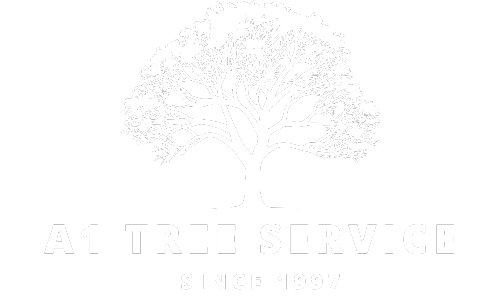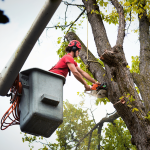Tree trimming is a critical component in the maintenance of beauty, safety and health of your trees and landscape. As a homeowner in need of cleaning up your yard, or a property manager who wants to ensure the safety of people around buildings, it is good to know the cost of tree trimming so that you can plan your finances well.
This guide provides the average prices, factors that influence the prices, and the way you can get the most out of your money.
Why Tree Trimming Matters?
Before we get into the costs, it is important to understand why we need tree trimming:
- Enhances Tree Health: Dead or diseased branches are removed thus the tree grows stronger.
- Increases Curb Appeal: A tree that is pruned up looks neat and improves the value of your property.
- Improves Safety: Eliminates weak or overgrown branches that can fall on homes, cars or power lines.
- Promotes Growth: Proper trimming encourages healthier, more controlled growth.
Average Cost of Tree Trimming in the U.S.
National Average
The cost of tree trimming in the United States is averagely between 250 to 800 dollars per tree, which largely depends on a number of factors.
On a national scale:
- Low-end cost: $150
- Typical cost: $400–$500
- High-end cost: $1,000 or more
You may pay less than 200 dollars to trim a small tree and more than 1200 dollars to trim big, mature trees.
Factors That Affect Tree Trimming Costs
Tree Size and Height
Size of the tree is one of the biggest factors of pricing:
Under 25 feet (small): $100 – $300
25 to 50 feet (medium): $200 – $600
Over 50 feet (large): $500 – $1,200+
Taller trees require more labor, equipment, and safety precautions.
Tree Type
Certain species are more difficult to prune because of thicker growth or thorns. An example is that, palm trees, oak trees, or pine trees may be more expensive than a typical maple.
Tree Condition
A diseased, storm-damaged, or otherwise complicated-branched tree may require special treatment, which increases the cost.
Location on Property
Is your tree easy to access off the road or driveway? The cost may also be high in case trees are close to power lines, fences, or structures, as special care and safety measures will be required.
Amount of Trimming Needed
A light pruning will be cheap when compared to a complete canopy reduction or crown thinning The longer the job will take, the more it will cost.
Emergency or Same-Day Service
When a storm strikes or you need an emergency tree trimming to prevent property destruction, you can expect to pay 1.5x to 2x the normal rate.
Additional Costs to Consider
Clean up and Disposal
Basic cleanup is usually part of the price but full debris cleaning or wood chipping may be an additional cost (approximately an extra $50 to 150).
Travel Fees
The company may also charge extra in case you live in a remote area and it takes them longer to travel to you or transport the equipment.
Permits and Regulations
In some cities or homeowner’s associations, cutting down large trees or of special trees may be subject to permits. Fees vary by state and city.
Tree Trimming vs Tree Removal: Know the Difference
Trimming keeps the tree alive and healthy. Removal is cutting down the tree to the ground -which is more costly.
| Service | Average Cost |
| Tree Trimming | $250 – $800 |
| Tree Removal | $400 – $1,500+ |
When you are told you will be charged $1,200 to trim a small tree, inquire whether the job might be mistaken as a removal job.
How to Get a Fair Price
Get Multiple Estimates
Always ask at least 2-3 quotes to licensed, insured tree service companies. This helps you compare prices and services offered.
Check Reviews and Credentials
Ensure that the company is insured, certified (check out ISA Certified Arborist), and has positive reviews by the customers on websites like Google, Yelp, or Angie’s List.
Ask for a Written Estimate
A written quote should include:
- Cost breakdown (labor, equipment, cleanup)
- Estimated time to complete the job
- Liability insurance information.
Avoid Extremely Low Bids
When a company is offering prices that appear to be too good to be true, then be careful. They may be shoddy, uninsured, or untidy.
Tips to Save Money on Tree Trimming
- Trimming in Off-Season: The off-season where it is slow comes during winter or early spring time when tree services slow down. You might get a discount.
- Bundle Services: A number of trees can be trimmed simultaneously, which lowers the cost per tree.
- Do Your Own Light Maintenance: Branches that are low or branches that are small can be trimmed safely by the homeowner (with the proper equipment and safety gear).
- Have your Trees Inspected: Get your trees inspected every 2-3 years so that you can avoid costly emergency services in the future.
Is DIY Tree Trimming Worth It?
Saving money is possible when DIY is involved in small trees or minor trimming.
But in the case of tall trees or complicated jobs, professional services are highly advised because of:
- Risk of injury from falling or using ladders/chainsaws
- Potential damage to property
- Liability issues.



